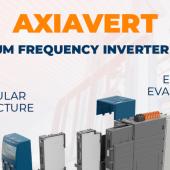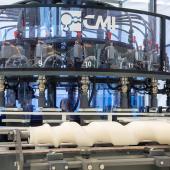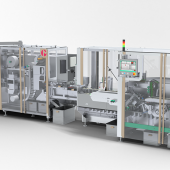Efficiency right down the (packaging) line
TREND SETTER producing in a sustainable way, finding the right balance between flexibility and increased productivity: This is the objective of all industrial concerns, to which Siemens offers a valuable contribution of technological knowledge and experience. Inspired by the concept of Optimized Packaging Line, the company offers specific and cutting-edge automation solutions for the packaging world.
Optimized Packaging Line is not just a simple product but an integrated automation concept around which Siemens has worked to field systems and services that ensure automatic packaging machine manufacturers (as well as their end users) maximum operational efficiency, also enabling a shrewd management of energy costs all the way down the line.

«We are increasingly convinced - says Michele Falcone, Packaging System Manager of Siemens Italy - that to perform well on the market, companies need to be truly propositive, launching real innovatory alternatives instead of resorting to tried and trusted measures. Prior to fielding the OPL (Optimized Packaging Line) concept - the manager goes on, getting to the heart of the matter - we pondered on the keywords that characterize the global market for production machines. For brevity’s sake, we summarize them as: total cost of ownership, longterm investment security, the reduction of storage costs and use of international standards (such as for example OMAC). It is under these assumptions, for example, that the latest generation of bottling and packaging lines have come into being, able to satisfy all user needs in terms of versatility, modularity and productivity».
Siemens’ OPL (Optimized Packaging Line) in practice provides adequate support for all these needs.
«In keeping with the philosophy of ‘totally integrated automation’, adopting the innovative concept expressed by OPL means uniforming automation architecture of machines and packaging/bottling lines by standardizing interfaces, software modules and hardware components, thus offering a wide range of benefits: OPL creates the conditions for realizing simple and rapid, high-tech solutions. In other words - summarizes the manager - equipment manufacturers can innovate in a more economic and flexible manner, at the same time reducing time-to-market. And this of course benefits their image as trendsetters in the technological field, but also ensures economic returns for the system users in the immediate future».
OPL: market flexibility,
high competitiveness
The automation of packaging and/or bottling machines with Siemens’ systems therefore ensures the integration of standard based components and reduces the multiplicity of variants. Which helps to further reduce the engineering and fixed costs, while increasing productivity, flexibility and speed of response to market demands.
«The use of OPL generates benefits of various kinds and levels» Falcone assures «due in the first instance to the need to install fewer components in terms of the systems on the market, that have open and standardized software structures and common interfaces. But also by the fact that the solutions offered are based on international standards: an important reassurance for customers around the world, and if to this we add that Siemens is able to field and support a global partnership to comply with standards laid down by law, we are confident that the approval of packaging machine users will be ever broader».
The advantages of OPL in detail
• Lesser number of components - The optimised selection of components, perfectly compatible with each other, reduces complexity in the line. This results is a net reduction of costs. Using similar machine concepts for different users, the formulation of the offer is simpler and the same goes for purchase, logistics and support. Moreover, thanks to a smaller number of devices, the cost of training and documentation, of support from expert personnel and for the protection of knowhow are also reduced.
• Standardized and open software structures - Enable the flexible production of modular machines and shorten delivery times, benefiting competitivity. Since the Software Toolbox libraries are already proven, the engineering and costs and related costs are reduced. The equipment manufacturers will be able to devote more time to innovating the machine, enhancing performance and presenting it at a competitive price.
• Common interfaces - The standardization of interfaces enables the creation of more flexible machines in less time and simplifies the integration in line of the same. This helps to reduce the user’s engineering costs and to shorten the system start-up phase, further limiting costs. A scalable software for the analysis of production data completes the portfolio, offering high level supervision and control systems.
Packaging according to Siemens
State-of-the-art controls and a rational energy management are fundamental to the good operativity of an industrial plant.
In industrial plants used in the dairy industry, different machines operate, dedicated to making, processing and transporting the product: from the coagulation tanks to curd draining and ripening systems, from the fillers to conveyor belts.
For the efficient management of the motor a state-of-the-art motor control systems, such as Sinamics G120, is required.
With a power range between 0.55 to 18.5 kW, the Siemens G120 Sinamics sets new standards in its class in relation to its compact size, fast commissioning times, its operational simplicity and highly integrated functionality.
Compared to conventional systems on the market, it requires 30% less installation space, while offering up to 40% more power density. ,
Noteworthy too the plug-in terminals, quick to install, the memory card port that enables fast series commissioning, several drives and data back-up, the new BOP-2 operator panel that can also be parameterized using a PC, via a USB interface. Instead of a blind cover, an operator panel may also be mounted for commissioning purposes.
Designed for operating temperatures up to 60 °C, standard paintwork ensures the unit is extremely robust.
As in any industry, in the dairy sector too safety has become a focal point. Each G120C has the integrated Siemens "Safety Integrated" safety technology as standard, to ensure the drives can be stopped safely.
It is equipped with a double safe input ex-works, and so controls the STO (Safe Torque Off) function without requiring external devices.
The G120C includes the well-established control procedures of the Sinamics platform. Sensorless vector operation enables precise, cost-effective control for the energy-efficient operation of induction motors.

















